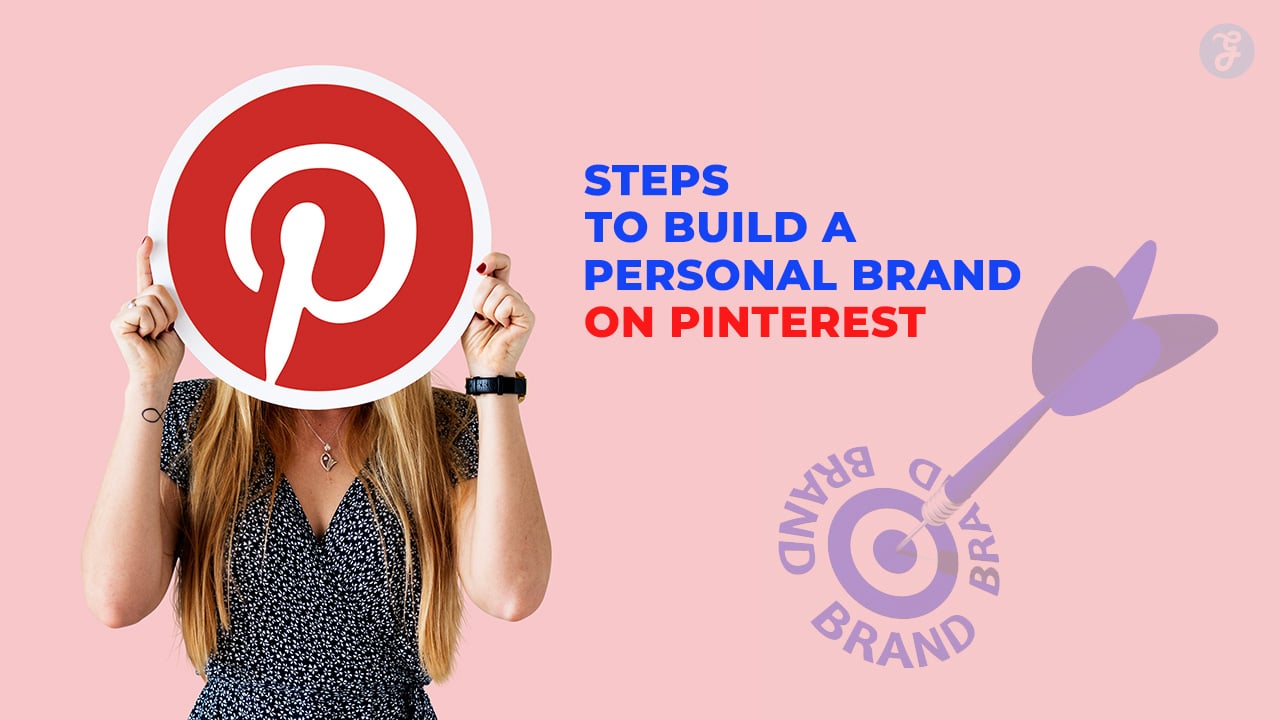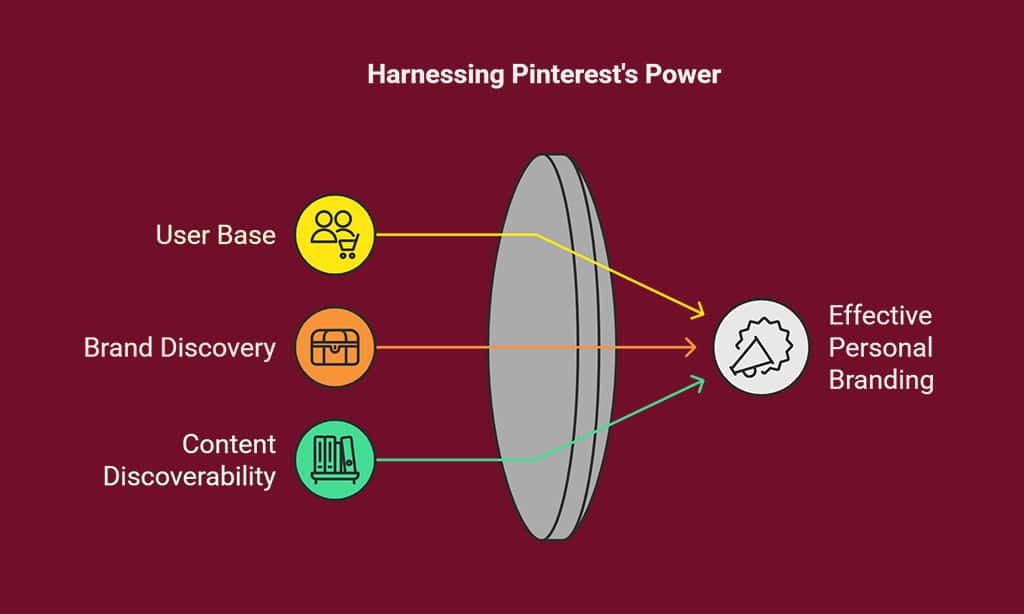Pinterest is more than just a visual discovery platform; it’s a powerful tool for personal branding. Whether you’re an entrepreneur, blogger, influencer, or small business owner, learning the right steps to build a personal brand on Pinterest can help you gain visibility, drive traffic, and establish authority in your niche.
Unlike other social platforms, Pinterest acts as a search engine, making it crucial to optimize your profile, content, and engagement strategies.
In this guide, we will explore 7 steps to build a personal brand on Pinterest effectively, from setting up an optimized profile to leveraging SEO, engagement strategies, and analytics to refine your brand presence.
Why Pinterest is a Powerful Platform for Personal Branding
Building a personal brand on Pinterest is an effective way to establish credibility and drive engagement. Unlike other social media platforms, Pinterest functions as a visual search engine, allowing content to be discovered long after it’s posted. By leveraging Pinterest strategically, individuals can gain consistent traffic, showcase their expertise, and connect with a targeted audience.
The Growing Influence of Pinterest
- Pinterest has over 450 million monthly active users worldwide.
- 80% of weekly pinners have discovered a new brand or product on Pinterest.
- Unlike social media platforms, Pinterest content has long-term discoverability, making it ideal for personal branding.
| Statistic | Insight |
| 450M+ | Active monthly users on Pinterest |
| 80% | Users discover new brands via Pinterest |
| 97% | Searches are unbranded, allowing personal brands to thrive |
How Pinterest Drives Brand Awareness and Engagement
Pinterest plays a crucial role in shaping brand awareness by allowing individuals and businesses to showcase their expertise visually. Since Pinterest functions as a search engine, pins remain discoverable for months or even years, offering long-term visibility. By optimizing content with strategic keywords and compelling visuals, brands can effectively capture audience attention and increase engagement.
- Users come to Pinterest with purchase intent or a learning mindset.
- Pins can be re-shared indefinitely, increasing visibility over time.
- The Pinterest algorithm prioritizes high-quality, optimized content, making it an ideal platform for brand growth.
| Benefit | Explanation |
| Long-term visibility | Pins last longer than social media posts |
| High engagement | Users actively search for content |
| SEO benefits | Pinterest functions as a visual search engine |
Step 1: Define Your Personal Brand Identity
Establishing a strong personal brand on Pinterest begins with clarity. Before creating content, it’s essential to define your niche, target audience, and unique value proposition. A well-defined brand identity not only attracts the right followers but also makes your content stand out in a highly visual and competitive platform.
A successful personal brand on Pinterest starts with understanding who you are and what you offer. This involves analyzing your strengths, passions, and the value you can provide to your audience. By pinpointing your niche and crafting a unique brand message, you can develop a strong foundation for your Pinterest presence. A well-established identity makes it easier for followers to recognize your content and engage with it regularly.
Identifying Your Niche and Target Audience
- Choose a niche aligned with your expertise (e.g., fitness, home decor, personal finance).
- Research your target audience’s interests and search behaviors.
| Factor | Consideration |
| Niche | Choose an area where you have expertise |
| Audience | Identify who will benefit from your content |
| Content Type | Decide on visuals, tutorials, or infographics |
Crafting a Unique Value Proposition
- What makes you different? Identify what unique insights or offerings you provide.
- Communicate your expertise clearly in your profile and content.
- Highlight your strengths and ensure that your messaging aligns with your niche.
- Showcase testimonials or case studies that validate your expertise.
Choosing the Right Brand Aesthetics and Tone
- Use consistent colors, fonts, and imagery to create a recognizable brand.
- Align visuals and messaging with your brand personality (professional, casual, or inspirational).
- Develop a signature style for your pins that distinguishes your brand from competitors.
- Create a compelling brand story that resonates with your audience and builds an emotional connection.
By establishing a clear and compelling brand identity, you can ensure that every piece of content you create aligns with your vision and attracts the right audience. A strong brand presence on Pinterest will not only help you stand out but also create a loyal and engaged community over time.
Step 2: Optimize Your Pinterest Profile for Branding
A well-optimized Pinterest profile is essential for building a strong personal brand. Your profile serves as the first impression potential followers get, so it should reflect your niche, personality, and brand identity. From selecting the right profile picture to writing an engaging bio and linking your website, every element should be tailored to attract and retain your target audience.
Selecting a Recognizable Profile Picture and Username
- Use a high-quality headshot or logo that aligns with your brand.
- Keep your username consistent across platforms for easy recognition.
Writing an SEO-Friendly Bio with Keywords
- Include primary and related keywords (e.g., “personal branding tips,” “social media growth”).
- Add a call-to-action (e.g., “Follow me for daily Pinterest growth tips!”).
Adding a Website and Claiming It for Credibility
- Claim your website to increase visibility and track performance through analytics.
- Verified accounts appear more trustworthy and can use Rich Pins.
| Optimization Tip | Benefit |
| Profile Picture | Enhances brand recognition |
| SEO Bio | Improves searchability |
| Website Claiming | Enables analytics & Rich Pins |
By taking these optimization steps, you can ensure that your Pinterest profile represents your brand professionally and effectively. A well-structured profile sets the stage for success, making it easier for users to discover, follow, and engage with your content.
Step 3: Develop a Strategic Content Plan
Once your profile is optimized, the next step in the steps to build a personal brand on Pinterest is developing a content strategy. A well-structured content plan ensures consistency, maximizes engagement, and helps position you as an authority in your niche. Without a plan, posting can be sporadic, leading to inconsistent growth.
Creating a Content Calendar for Consistency
- Schedule content in advance using tools like Tailwind.
- Post fresh pins daily (Pinterest recommends at least 5-10 pins per day).
- Plan content around seasonal trends and audience interests.
| Content Type | Frequency Recommendation |
| Standard Pins | 5-10 per day |
| Video Pins | 3-5 per week |
| Idea Pins | 2-3 per week |
Types of Engaging Pins to Post
- Standard Pins: High-quality images with compelling text overlays.
- Video Pins: Boost engagement and showcase tutorials.
- Idea Pins: Multi-page pins that encourage storytelling and tutorials.
By crafting a solid content plan, you can ensure that your personal brand remains active, relevant, and engaging on Pinterest. Stay consistent, track what resonates with your audience, and refine your strategy over time for maximum growth.
Step 4: Design Eye-Catching and Click-Worthy Pins
Creating visually appealing pins is a crucial part of the steps to build a personal brand on Pinterest. Eye-catching designs help grab user attention, increase engagement, and drive traffic to your content. By focusing on high-quality images, branding consistency, and compelling visuals, you can establish a strong presence on Pinterest and make your pins more shareable.
Using High-Quality Images and Consistent Branding
- Use vertical pins (1000×1500 pixels) for best performance.
- Maintain a cohesive color palette to reinforce brand identity.
Best Practices for Pin Dimensions and Formats
| Pin Type | Recommended Size |
| Standard Pin | 1000 x 1500 px |
| Video Pin | 1080 x 1920 px |
| Idea Pin | 900 x 1600 px |
Writing Compelling Titles and Descriptions
- Use action-oriented titles (e.g., “7 Proven Steps to Build a Personal Brand on Pinterest”).
- Include keywords naturally and add a call-to-action (“Pin for later!”).
Step 5: Leverage SEO to Increase Pinterest Visibility
Pinterest functions as a visual search engine, making SEO a critical component of your branding strategy. By optimizing your profile, boards, and pins, you enhance your chances of ranking higher in Pinterest search results and reaching a broader audience.
Keyword Research for Pinterest Search Optimization
- Use Pinterest’s search bar to find trending keywords.
- Analyze competitor profiles to discover popular terms.
- Utilize Google’s Keyword Planner for additional keyword ideas.
| SEO Strategy | Implementation Tip |
| Keyword Usage | Integrate keywords naturally in pin titles |
| Hashtags | Use 3-5 relevant hashtags per pin |
| Board Titles | Optimize with descriptive and niche-specific names |
| Pin Descriptions | Write compelling descriptions with keywords |
Crafting SEO-Optimized Board Titles and Descriptions
- Create niche-specific boards (e.g., “Pinterest Growth Strategies”).
- Use long-tail keywords for better ranking.
- Add relevant descriptions that tell users what to expect.
Hashtags vs. Keywords: What Works Best?
- Focus more on keywords in descriptions rather than excessive hashtags.
- Use natural language to enhance discoverability.
- Keep hashtags relevant and minimal (3-5 per pin).
By implementing these SEO strategies, you can ensure that your pins reach the right audience, increasing visibility and engagement over time.
Step 6: Engage with the Pinterest Community
Engagement is a key factor in the steps to build a personal brand on Pinterest. Actively participating in the Pinterest community not only boosts your visibility but also helps build strong relationships with your audience. By engaging with other creators, joining group boards, and responding to interactions, you can establish trust and increase your brand’s credibility on the platform.
Joining Group Boards for More Exposure
- Find relevant group boards in your niche on PinGroupie.
- Apply to join high-engagement boards to expand your reach.
- Contribute high-quality, valuable content consistently.
Repinning and Collaborating with Influencers
- Engage with top creators by repinning and commenting.
- Cross-promote content with influencers to grow your audience.
- Join Pinterest Tailwind Tribes for added visibility.
| Engagement Method | Benefits |
| Joining Group Boards | Expands audience reach |
| Repinning Content | Increases engagement and community growth |
| Commenting on Pins | Builds relationships with followers |
Responding to Comments and Messages
- Encourage conversations by replying to comments.
- Build relationships by DMing collaborators and followers.
- Show appreciation by thanking users for repins and follows.
Engagement is a two-way street. By actively interacting with others on Pinterest, you increase your credibility, boost your brand presence, and foster a loyal community of followers.
Step 7: Analyze Performance and Optimize Strategy
Measuring and analyzing your results is a crucial step in the steps to build a personal brand on Pinterest. Without tracking performance, it’s difficult to understand what strategies are working and where improvements are needed. By leveraging Pinterest analytics, testing different content formats, and refining your approach, you can continuously optimize your brand presence for better engagement and visibility.
Tracking Key Pinterest Analytics Metrics
| Metric | Why It Matters |
| Impressions | Measures reach |
| Clicks | Shows engagement |
| Saves | Indicates content value |
A/B Testing Pin Designs and Descriptions
- Experiment with different pin colors, fonts, and CTAs.
- Compare performance and refine strategies based on results.
- Test different formats (carousel, video, standard pins) to see what resonates best.
Adjusting Strategy Based on Insights
- Double down on top-performing content.
- Remove or update underperforming pins for better engagement.
- Stay updated with Pinterest trends and adjust accordingly.
By consistently analyzing and refining your strategy, you ensure long-term growth and effectiveness in your personal branding efforts on Pinterest.
Takeaways
By following these 7 steps to build a personal brand on Pinterest, you can enhance your online presence, attract a loyal audience, and drive sustainable traffic to your website.
With a well-optimized strategy, you can establish authority in your niche, create content that resonates with your target audience, and turn Pinterest into a powerful tool for long-term brand success.
Start today, experiment with different strategies, and watch your personal brand grow on Pinterest!










































